App content updates taking too long?
Your non-technical teams probably can’t make instant updates, which creates frustrating bottlenecks and slows your go-to-market initiatives.
This reliance on developers for simple text or image changes kills your team’s agility and can lead to missed opportunities.
The stakes for getting this right are high. Cisco’s 2023 App Attention Index found that almost half of mobile users feel disrespected by poor content experiences. This shows just how crucial timely, relevant updates are.
A good mobile CMS solves this by putting content control directly in your team’s hands, cutting out the developer middleman for good.
In this article, I’ll guide you through my top picks for the best mobile content management system. I’ll show you tools designed to empower your non-technical teams.
You’ll find solutions to help you scale content, support global campaigns, and accelerate your content delivery without the endless, costly development cycles.
Let’s get started.
Quick Summary:
| # | Software | Rating | Best For |
|---|---|---|---|
| 1 | Contentful → | Global marketing teams | |
| 2 | Contentstack → | Enterprise content ops | |
| 3 | Kontent.ai → | Non-technical teams at scale | |
| 4 | dotCMS → | Mid-size marketing teams | |
| 5 | Sanity → | Product managers & marketers |
1. Contentful
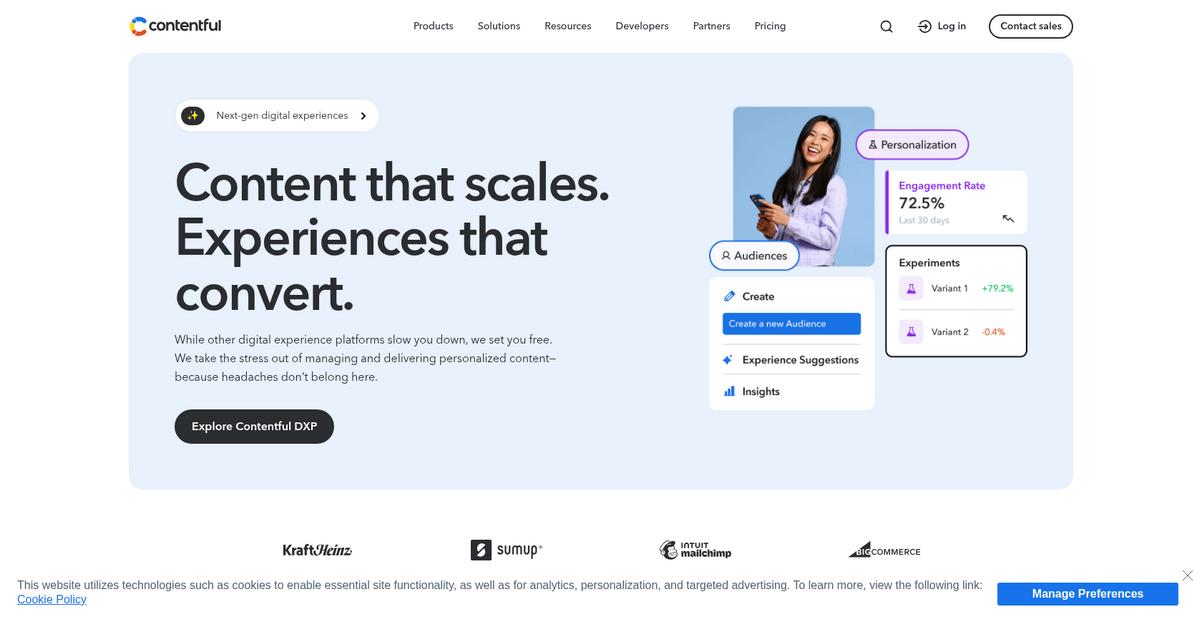
Tired of content chaos and slow updates?
Your current tools likely lack the flexibility needed for instant mobile updates across devices and regions. This means frequent app content changes become a huge headache for your product and marketing teams.
Contentful offers a modular, composable architecture that addresses this, allowing you to manage and deliver personalized content without the stress.
It’s time to streamline your mobile content.
Here’s how Contentful solves these challenges, enabling non-technical teams to manage mobile app content at scale. You can create and manage all your content in one central hub, making it easy to deliver consistent, on-brand experiences across websites and apps.
Additionally, Contentful’s AI Actions generate on-brand copy, suggest audience-targeted ideas, and personalize experiences, freeing your developers to focus on core product development. This allows you to update a content component once, and it instantly updates everywhere, including multilingual campaigns. Plus, no-code personalization tools let marketers tweak, test, and tailor experiences in real-time, accelerating go-to-market initiatives and driving higher user engagement.
The result is consistent, on-brand experiences across all channels.
Key features:
- Modular content architecture: Reuse and remix content components effortlessly across multiple channels, brands, and regions, accelerating marketing campaigns and reducing developer reliance.
- AI-powered capabilities: Generate, translate, and personalize content within brand guidelines and quickly localize it for every audience, channel, and region.
- No-code personalization: Empowers marketers to tweak, test, and tailor experiences in real-time, enabling non-technical teams to manage mobile app content effectively.
Contentful features, pricing, & alternatives →
Verdict: Contentful’s composable, AI-powered platform is designed for agility, supporting seamless multi-device deployment and global localization. With capabilities like modular content and no-code personalization, it excels as a best mobile content management system, allowing your team to drive higher user engagement and streamline mobile content operations.
2. Contentstack
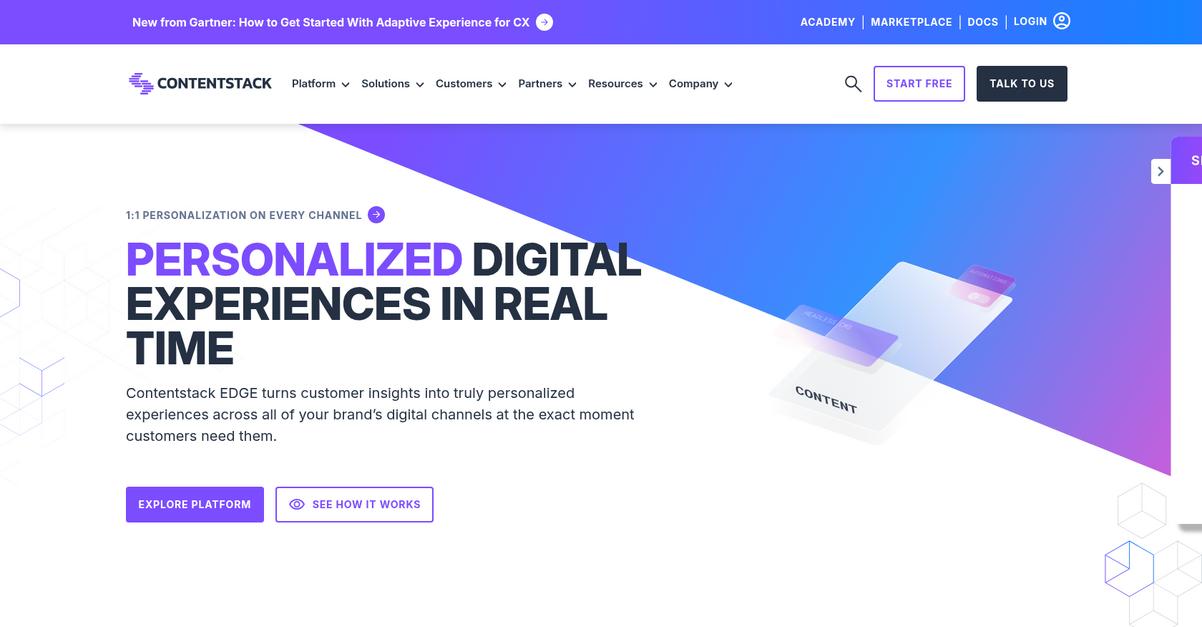
Tired of slow, clunky mobile content updates?
Contentstack empowers your content team with a headless, API-first content management system designed for speed and agility.
This means you can say goodbye to developer bottlenecks and take control of your mobile app content, ensuring swift updates and consistent delivery across all your digital properties.
How can you finally achieve content agility?
Contentstack solves the pain points of rigid systems by offering a flexible, cloud-native architecture.
Your teams can leverage Contentstack’s headless CMS and robust APIs to personalized digital experiences in real time, responding to evolving customer expectations instantly.
Plus, with features like Live Preview for content managers, automation via Automation Hub, and intuitive workflows, you can streamline operations, accelerate product development, and ensure your content strategy is always ahead of trends across diverse channels.
This elevates and empowers your entire team.
Before diving deeper, you might find my analysis of auto dealer software helpful.
Key features:
- Headless Content Management: Provides an API-first approach, enabling your content team to manage and deliver content to any mobile device or digital channel.
- Omnichannel Personalization: Empowers you to craft truly personalized user experiences across all your brand’s digital touchpoints, driving higher engagement and conversions.
- AI & Automation: Offers robust automation tools and AI capabilities to simplify complex tasks, accelerate content delivery, and free up your team for creative work.
Contentstack features, pricing, & alternatives →
Verdict: Contentstack’s composable, API-first architecture and strong focus on automation make it an exceptional choice if you’re seeking the best mobile content management system. With a reported 230% faster content publishing and 70% reduction in developer time, it enables agile content delivery and improved ROI.
3. Kontent.ai
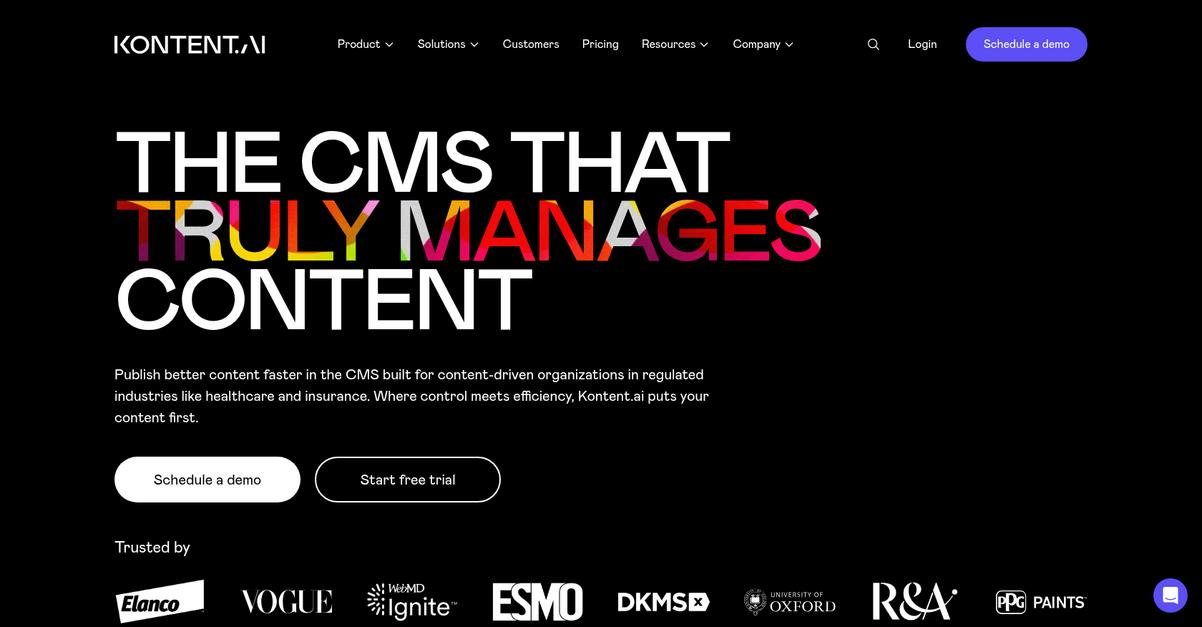
Frustrated by slow mobile content updates and multi-device deployment issues?
Kontent.ai offers a content-first CMS built to overcome these challenges, empowering your team to publish better content faster. This means you can finally achieve instant updates and seamless multi-device deployment.
Their approach helps you move away from engineering-dependent systems, allowing non-technical teams to manage content with low reliance on developers.
Here’s how Kontent.ai simplifies mobile content management.
It offers complete control and oversight with governance built into every action, ensuring high-quality, accurate, and consistent content for mobile apps. You can also create content once and publish it to any channel or device, making your workflow efficient. This includes features like smooth content creation, reviews, and approvals, which drastically cut publishing times from months to minutes, as seen with WebMD Ignite. Plus, with Mission Control, you get real-time insights into content operations, tracking tasks, workflows, and recently published content to identify and fix bottlenecks.
This approach delivers reliable, flexible mobile content operations that scale.
If you’re also evaluating other business software, my article on best SaaS billing software covers essential solutions.
Key features:
- Centralized Content Hub: Organize all content and assets in one place, with granular access controls for secure, high-quality, and compliant content.
- Modular Content & Reuse: Break content into strategic chunks for reuse, allowing you to update once and reflect changes across all mobile channels instantly.
- Streamlined Workflows: Manage content value chains from planning to publishing, with built-in workflows, reviews, and approvals for efficient team collaboration.
Kontent.ai features, pricing, & alternatives →
Verdict: Kontent.ai stands out as the best mobile content management system by empowering non-technical teams to manage app content at scale. With features like Mission Control for oversight, modular content for consistency, and a headless architecture for flexible deployment, it accelerates go-to-market initiatives, as demonstrated by WebMD Ignite’s publishing time reduction from months to minutes.
4. dotCMS
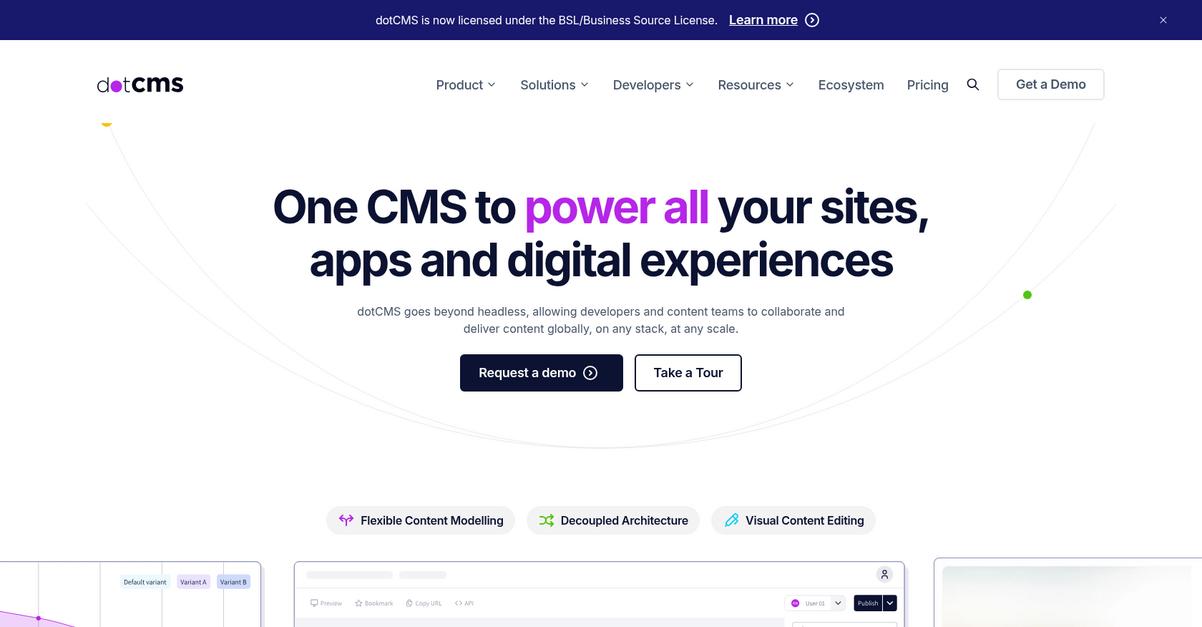
Struggling with slow mobile content updates?
dotCMS offers flexible content modeling and visual editing tools. This means your team can easily create and publish content, even with a headless setup.
You can streamline content creation and delivery, giving your team the power to manage content independently, reducing reliance on developers and speeding up workflows.
Here’s a solution to accelerate your mobile go-to-market.
dotCMS empowers your content and marketing teams to manage mobile app content at scale. You can develop and publish content all in one place, creating the content model you need.
This allows you to easily manage pages with no-code visual editing tools, ensuring your team can structure and reuse content across pages and sites. Plus, content can be automatically translated for global reach, helping you expand your multilingual campaigns.
Additionally, marketing teams can optimize content by A/B testing copy and layouts, collecting real-time feedback. This helps you publish successful tests instantly and personalize experiences based on geography, site actions, or even the user’s device, ensuring your content resonates.
The result is agile mobile content operations.
While we’re discussing supporting your teams, understanding virtual PBX systems is equally important for modern communication.
Key features:
- Flexible Content Modeling: Create custom content structures and reuse content across various channels and campaigns, allowing your team to easily manage diverse mobile content needs.
- No-Code Visual Editing: Empower non-technical teams to update and publish mobile content independently, significantly reducing developer dependency and accelerating content delivery.
- Multi-Site & Global Localization: Manage multiple sites under one umbrella and automatically translate content, supporting your multilingual campaigns and global content strategy.
dotCMS features, pricing, & alternatives →
Verdict: If you’re looking for the best mobile content management system that streamlines content operations and reduces developer reliance, dotCMS stands out. Its no-code visual editing, coupled with robust content modeling and automated translation, helps your team accelerate go-to-market initiatives and drive higher user engagement.
5. Sanity
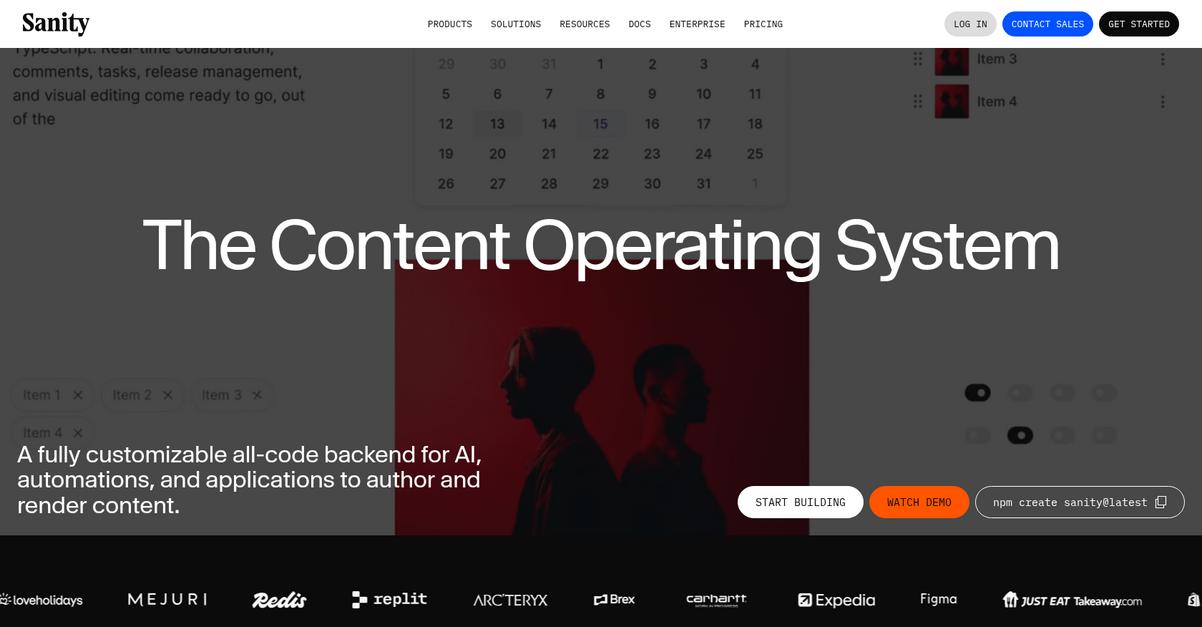
Struggling to keep your mobile content fresh?
Your content teams need agile tools for instant updates and multi-device deployment. Sanity offers a fully customizable, all-code backend for managing all your content applications.
This system provides a centralized platform for creation and distribution, ensuring content is always current and consistent across mobile apps.
It’s time to streamline your mobile content.
Sanity’s Content Operating System directly addresses these challenges. With the Sanity Studio, your team gets a real-time content workspace, configurable with TypeScript and customizable with React, which helps your non-technical teams manage mobile app content at scale.
This allows for interactive visual editing without compromising content reusability, supporting multilingual campaigns and accelerating go-to-market initiatives by reducing developer reliance. Additionally, its Content Lake and Live CDN optimize content queries and delivery, ensuring your mobile app content is served fast, anywhere, from a real-time backend. Plus, the App SDK and APIs let you build custom content apps for complex workflows.
The result? Higher user engagement.
Before diving deeper, you might find my analysis of best content management software helpful for broader content operations.
Key features:
- Sanity Studio: A TypeScript CMS that grows with you, offering a feature-rich, real-time content workspace for your team to manage content effectively.
- Content Lake + CDN: An optimized content database storing content as JSON, structured your way, and delivered rapidly anywhere via a real-time content backend.
- App SDK + APIs: Build custom content applications, dashboards, tables, and grids to power complex workflows precisely tailored to your team’s needs.
Sanity features, pricing, & alternatives →
Verdict: Sanity stands out as the best mobile content management system due to its flexible, customizable architecture and features like the App SDK and Content Lake. It empowers product managers and digital marketing leads to enable non-technical teams, manage content at scale, and drive agile mobile content operations, as demonstrated by customer success with brands like PUMA.
6. Strapi
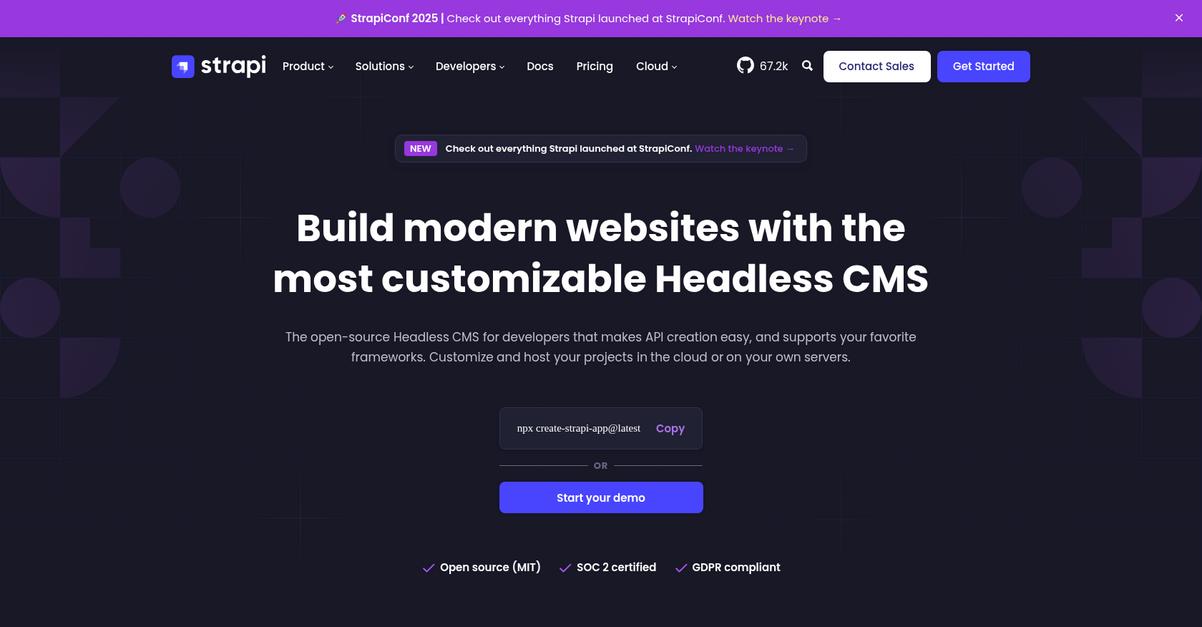
Tired of content chaos across mobile devices?
Strapi delivers an open-source headless CMS that designs REST and GraphQL APIs, providing the flexibility your team needs. This means you can finally manage content easily across any device.
Your product managers and digital marketing leads will appreciate the ability to manage editing, publishing, and translation autonomously.
Here’s how Strapi simplifies your content operations.
Strapi allows you to manage content for mobile applications with “One CMS, any devices.” This eliminates the pain of inconsistent updates and ensures a smooth user experience across platforms.
You can personalize your CMS to meet your project’s unique requirements, ensuring it aligns perfectly with your team’s workflows. Additionally, its collaboration features enable your content and development teams to work together efficiently, reducing bottlenecks and accelerating content delivery. Plus, robust security measures protect your information, building trust with your customers.
The result is autonomous content management, reducing developer reliance and accelerating your go-to-market initiatives significantly.
Key features:
- Flexible API Creation: Design REST and GraphQL Content Delivery APIs to connect to any frontend, enabling seamless multi-device deployment for your mobile apps.
- Intuitive Content Management: Easily manage editing, publishing, and translation, empowering non-technical teams to handle mobile app content at scale and support multilingual campaigns.
- Extensive Customization: Personalize your CMS to meet unique project requirements, ensuring robust integrations and fast user adoption without disrupting existing workflows.
Strapi features, pricing, & alternatives →
Verdict: Strapi stands out as a strong contender for the best mobile content management system due to its open-source flexibility and customization options. It enables non-technical teams to manage mobile app content autonomously across devices, supporting multilingual campaigns and accelerating go-to-market initiatives, all while offering robust security.
7. Hygraph
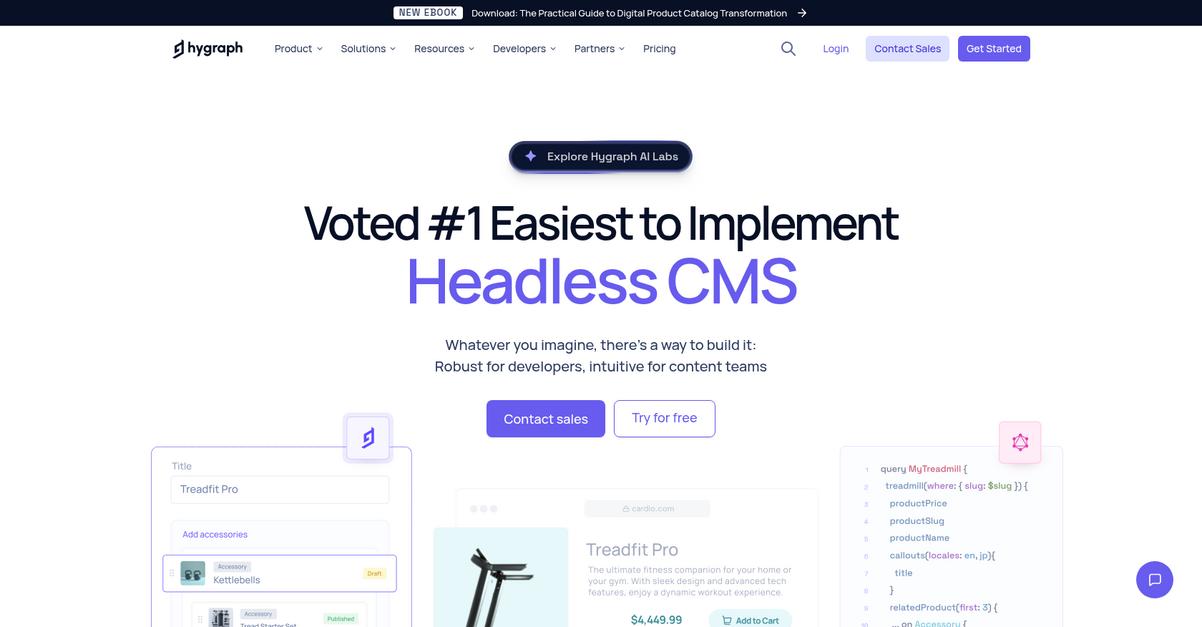
Struggling to manage mobile content across diverse platforms?
Hygraph’s headless CMS simplifies complexity, freeing your team from rigid setups and developer reliance. This means you can easily manage and distribute content globally.
This directly addresses your need for instant updates and multi-device deployment. Hygraph empowers non-technical teams to control content at scale.
Here’s how Hygraph elevates your content operations.
Hygraph solves the problem of inflexible content tools by offering a system built for demanding digital projects, speeding up content velocity. You can easily scale your business to new regions and markets with one CMS, which lowers overall costs and ensures consistent branding.
This is achieved through an API-first approach, a global CDN, and powerful localization features, enabling you to connect with audiences in over 40 markets. You can craft content exactly as you imagine, using flexible content modeling and granular permissions. Additionally, features like Hygraph Studio allow mixing and matching page sections like Lego blocks, drastically cutting down developer reliance and enabling faster go-to-market.
The result is higher content velocity and faster publishing.
Key features:
- Flexible Content Modeling: Simplifies intricate content structures and allows for elegant schema composition with intuitive editor fields, maximizing content value.
- Global Localization and CDN: Facilitates content translation, publishing, and management for diverse global audiences, ensuring consistent branding across 40+ markets.
- Developer Workflows & Live Preview: Empowers teams with API playgrounds, SDKs, Git-like environments, and real-time split-screen previews for faster iteration and autonomous publishing.
Hygraph features, pricing, & alternatives →
Verdict: Hygraph’s emphasis on flexible content modeling, global localization, and reduced developer reliance makes it a strong contender for the best Mobile Content Management System. Its ability to simplify complexity and achieve 7X higher content velocity for users like Burrow suggests it will drive agile mobile content operations for your team.
Conclusion
Mobile content updates slowing your team down?
I know how frustrating it is when your non-technical teams can’t make instant changes. This creates frustrating bottlenecks and completely missed opportunities for engagement.
This constant reliance on developers for simple updates is a huge drag on productivity. In fact, it kills your team’s agility and significantly slows your go-to-market initiatives across the board.
So what’s the best fix here?
From my experience, Contentful is the top choice for empowering your content teams. Its composable architecture puts content control directly back into their hands.
While Contentful excels in managing mobile content, connecting it with your existing tech stack often requires robust application integration tools.
I love how its AI actions and modular components let you update content once and see it change instantly everywhere. It’s the best mobile content management system for achieving true content agility.
I highly recommend you start a free trial of Contentful and see how it streamlines your entire mobile content workflow.
You will ship campaigns much faster.






